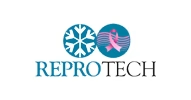Women Have Good Chances of a Second IVF Pregnancy
May 8, 2020/ Source: Amanda D’Ambrosio, MedPage Today – Women who conceived their first child via assisted reproductive technology (ART) and returned for a second baby had better than even probability of getting pregnant again, according to a large population-based study.
After six complete cycles, women who recommenced ART treatment with previously frozen embryos had a cumulative live birth rate of 61% to 88%, depending on assumptions made about the likelihood of success in women who dropped out of treatment, reported Georgina Chambers, PhD, of the University of New South Wales in Sydney, Australia, and colleagues.
As shown in the team’s study online in Human Reproduction, for women who started in vitro fertilization (IVF) for their second baby with fresh embryos, cumulative live birth rates were between 51% and 70%.
Of more than 35,000 women in Australia and New Zealand who conceived a child via ART, 43% returned to treatment for a subsequent pregnancy, the researchers said.
“This is the first time that the estimates for the chances of having a second baby using IVF have been calculated,” Chambers told MedPage Today via email. “This is important because most couples want more than one child. And those that had to use IVF to achieve their first baby are likely to need IVF again.”
Alan Penzias, MD, director of the Fellowship Program in Reproductive Endocrinology and Infertility at Harvard Medical School in Boston, who was not involved with the study, commented that it reflects a shift in thinking about treatment for infertility.
“In the early days of IVF when success rates were low, the focus was getting to ‘the baby,'” he told MedPage Today. “Having a second child was rarely considered. Nowadays, we ask couples what they see as their ideal family size at the first visit, so understanding how likely a second child is after the first success becomes very relevant.”
Penzias added that the study not only helps physicians quantify the chances of a second IVF success, but also allows them to understand what characteristics lead to that success. “Having this information can help physicians understand who to counsel to persist and who should be counseled to think about other alternatives,” he said.
Around 15% of couples, or 180 million people worldwide, experience infertility, Chambers and colleagues wrote. The aim of their study was to identify factors associated with returning to ART treatment for a second child, and to calculate both cycle-specific and cumulative live birth rates.
The researchers looked at data from the Australian and New Zealand Assisted Reproduction Database for ART cycles performed from 2009 to 2015. The database includes all 90 fertility clinics in these two countries, which are required to report ART cycles for licensing agreements.
The study population included 35,290 women who had an ART-conceived infant, and received treatment from 2009 to 2013. Women were followed up for 2 to 7 years, and all live births up to 2016 were included. The researchers excluded cycles that used donated oocytes or embryos, as well as any treatment for the purpose of long-term oocyte or embryo storage only.
The group adjusted for women’s age, the cause of infertility at the second time of ART treatment, and the time between the first ART-conceived live birth and the second treatment, as well as the parity and characteristics of the first treatment.
More than 15,000 women returned to IVF treatment for their second child. Those who were nulliparous at the time of their first ART-conceived child and those who were younger were more likely to return, and were also more likely to have had a fresh embryo transfer, the researchers reported.
During the second ART treatment, women more likely to have a second live birth were younger, had frozen embryos stored from their first IVF treatment, had a shorter time between the birth of their first child and second treatment, and got pregnant in the first few cycles.
The live birth rate in the first complete cycle was 43.4% for those who used a frozen embryo from the previous treatment, and 31.3% for women who started a new ovarian stimulation cycle. Although cycle-specific live birth rates declined in successive cycles, cumulative live birth rates increased for all age groups up to six cycles.
Among women younger than 30, live birth rates were similar for those who started their second treatment with previously frozen or fresh embryos. Yet for older women, live birth rates were better for those who used frozen embryos.
Regarding the clinical implications, Penzias said: “For those patients who want more than one child, there may be an advantage to having frozen embryos available from the first IVF cycle to use as frozen embryos for the second child.”
Study limitations, Chambers and colleagues said, included that the research does not account for individual prognostic factors that may affect a woman’s chance of IVF success, including the duration of infertility, body mass index, and ovarian reserve. In addition, since use of IVF is high in Australia and since it is included in universal healthcare coverage, the study’s generalizability to other groups may be limited.
Primary Source: Human Reproduction
Source Reference: Paul RC, et al “Cumulative live birth rates for women returning to ART treatment for a second ART-conceived child” Hum Reprod 2020; DOI: 10.1093/humrep/deaa030.



